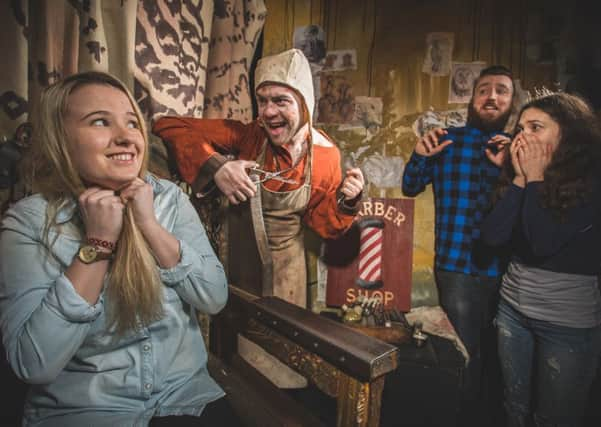10 ghastly 17th cures for every ailment at the Dungeon


Indeed, at the Edinburgh Dungeon right now, don’t be surprised if you hear a cry of ‘a plague on all your houses,’ to misquote Shakespeare.
Their latest dramatised show, Deadly Diseases, takes visitors back to the disease-ravaged streets of the Capital where they will come face-to-face with its victims and their ghastly ailments.
Advertisement
Hide AdAdvertisement
Hide AdManager Edward Evans, explains, “At the Dungeon we are always coming up with frighteningly funny ways to bring Edinburgh’s darkest history to life.
“Paying a visit to one of the city’s blood-thirsty barbers is the perfect way to experience this colourful chapter in the history book first hand - but it might put people off their next haircut.”
The blood-stained barbers, who treated those unable to afford a doctor, would act as surgeons and concocted a curious array of cures for almost every ailment.
Escape the on-site barber at the Dungeon, and venture down a plague-ridden Street of Sorrows where the Foul Clenger, the plague cleaner, in his leather mask awaits.
Advertisement
Hide AdAdvertisement
Hide AdAnd if you have ever wondered what those barber/surgeons of old recommended to cure the likes of cholera, typhus and the plague, staff at the Dungeon have been leafing through John Weasley’s An Easy and Natural Method of Curing Most Disease (1747), Dragon’s Blood & Willow Bark: The Mysteries of Medieval Medicine, by Toni Mount (2015), and The Widow’s Treasure (1595).
Here, they’ve compiled the Top 10 curious cures found in 17th century Edinburgh.
To cure asthma: Tar water, sea water, nettle juice and quicksilver are all acceptable cures, but a method that seldom fails is living a fortnight on boiled carrots.
To cure ‘A Cold in the Head’: Pare thin the rind of an orange. Roll it up inside out, thrust up each nostril.
Advertisement
Hide AdAdvertisement
Hide AdTo cure toothache: Rub the cheek every quarter of an hour or putting a clove of garlic into the ear.
For burns and scalds: Take a live snail and rub its slime against the burn and it will heal.
To cure gout: Take an owl, pluck it clean, open it, clean, salt it. Put it in a new pot, cover with a stone, put in an oven and let it stand till it be burnt. Then pound it with boar’s grease and anoint the gout therewith.
To cure a cough: Boil a pan of onions, allow it to cool, then drink the lukewarm broth.
Advertisement
Hide AdAdvertisement
Hide AdTo cure bed wetting: A mouse rotted and given to children to eat remedies wetting the bed.
To cure syphilis: One of the more deadly of the curious cures, highly toxic mercury was often used to attempt to cure syphilis, and could be administered by mouth, by rubbing on the skin or by injection.
To cure a migraine: Trepanning had something of a revival. It involved holes being bored into brain-bearing skulls to prevent the pain.
And to cure just about anything else: A visit to your friendly barber/surgeon for a ‘blood-letting’ session. The red and white pole outside barber shops to this day represents that practice.
Deadly Diseases, Edinburgh Dungeon, Market Street, extended until 29 May, shows from 10am-5pm, £11.75, www.thedungeons.com/Edinburgh